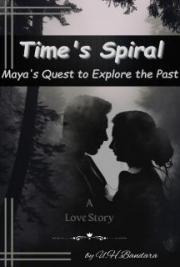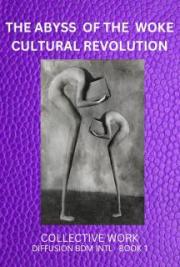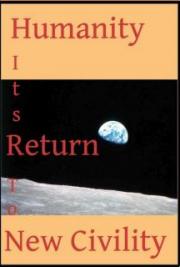Women’s Rights National Historic Park
Women’s Rights National Historical Park tells the story of the first Women’s Rights Convention held in Seneca Falls, NY on July 19-20, 1848. It is a story of struggles for civil rights, human rights, and equality, global struggles that continue today. The efforts of women’s rights leaders, abolitionists, and other 19th century reformers remind us that all people must be accepted as equals.
The park commemorates women's struggle for equal rights, and the First Women's Rights Convention, held at the Wesleyan Chapel in Seneca Falls, NY on July 19 and 20, 1848.
An estimated three hundred women and men attended the Convention, including Lucretia Mott and Frederick Douglass.
At the conclusion, 68 women and 32 men signed the Declaration of Sentiments drafted by Elizabeth Cady Stanton and the M'Clintock family.
Declaration of Sentiments
When, in the course of human events, it becomes necessary for one portion of the family of man to assume among the people of the earth a position different from that which they have hitherto occupied, but one to which the laws of nature and of nature's God entitle them, a decent respect to the opinions of mankind requires that they should declare the causes that impel them to such a course.
We hold these truths to be self-evident; that all men and women are created equal; that they are endowed by their Creator with certain inalienable rights; that among these are life, liberty, and the pursuit of happiness; that to secure these rights governments are instituted, deriving their just powers from the consent of the governed. Whenever any form of Government becomes destructive of these ends, it is the right of those who suffer from it to refuse allegiance to it, and to insist upon the institution of a new government, laying its foundation on such principles, and organizing its powers in such form as to them shall seem most likely to effect their safety and happiness. Prudence, indeed, will dictate that governments long established should not be changed for light and transient causes; and accordingly, all experience hath shown that mankind are more disposed to suffer, while evils are sufferable, than to right themselves, by abolishing the forms to which they are accustomed. But when a long train of abuses and usurpations, pursuing invariably the same object, evinces a design to reduce them under absolute despotism, it is their duty to throw off such government, and to provide new guards for their future security. Such has been the patient sufferance of the women under this government, and such is now the necessity which constrains them to demand the equal station to which they are entitled.
The history of mankind is a history of repeated injuries and usurpations on the part of man toward woman, having in direct object the establishment of an absolute tyranny over her. To prove this, let facts be submitted to a candid world.
He has never permitted her to exercise her inalienable right to the elective franchise.
He has compelled her to submit to laws, in the formation of which she had no voice.
He has withheld from her rights which are given to the most ignorant and degraded men - both natives and foreigners.
Having deprived her of this first right of a citizen, the elective franchise, thereby leaving her without representation in the halls of legislation, he has oppressed her on all sides.
He has made her, if married, in the eye of the law, civilly dead.
He has taken from her all right in property, even to the wages she earns.
He has made her, morally, an irresponsible being, as she can commit many crimes, with impunity, provided they be done in the presence of her husband. In the covenant of marriage, she is compelled to promise obedience to her husband, he becoming, to all intents and purposes, her master - the law giving him power to deprive her of her liberty, and to administer chastisement.
He has so framed the laws of divorce, as to what shall be the proper causes of divorce; in case of separation, to whom the guardianship of the children shall be given, as to be wholly regardless of the happiness of women - the law, in all cases, going upon the false supposition of the supremacy of man, and giving all power into his hands.
After depriving her of all rights as a married woman, if single and the owner of property, he has taxed her to support a government which recognizes her only when her property can be made profitable to it.
He has monopolized nearly all the profitable employments, and from those she is permitted to follow, she receives but a scanty remuneration.
He closes against her all the avenues to wealth and distinction, which he considers most honorable to himself. As a teacher of theology, medicine, or law, she is not known.
He has denied her the facilities for obtaining a thorough education - all colleges being closed against her.
He allows her in Church as well as State, but a subordinate position, claiming Apostolic authority for her exclusion from the ministry, and with some exceptions, from any public participation in the affairs of the Church.
He has created a false public sentiment, by giving to the world a different code of morals for men and women, by which moral delinquencies which exclude women from society, are not only tolerated but deemed of little account in man.
He has usurped the prerogative of Jehovah himself, claiming it as his right to assign for her a sphere of action, when that belongs to her conscience and her God.
He has endeavored, in every way that he could to destroy her confidence in her own powers, to lessen her self-respect, and to make her willing to lead a dependent and abject life.
Now, in view of this entire disfranchisement of one-half the people of this country, their social and religious degradation, - in view of the unjust laws above mentioned, and because women do feel themselves aggrieved, oppressed, and fraudulently deprived of their most sacred rights, we insist that they have immediate admission to all the rights and privileges which belong to them as citizens of these United States.
In entering upon the great work before us, we anticipate no small amount of misconception, misrepresentation, and ridicule; but we shall use every instrumentality within our power to effect our object. We shall employ agents, circulate tracts, petition the State and national Legislatures, and endeavor to enlist the pulpit and the press in our behalf. We hope this Convention will be followed by a series of Conventions, embracing every part of the country.
Firmly relying upon the final triumph of the Right and the True, we do this day affix our signatures to this declaration.
Lucretia Mott
Harriet Cady Eaton
Margaret Pryor
Elizabeth Cady Stanton
Eunice Newton Foote
Mary Ann M'Clintock
Margaret Schooley
Martha C. Wright
Jane C. Hunt
Amy Post
Catharine F. Stebbins
Mary Ann Frink
Lydia Mount
Delia Mathews
Catharine C. Paine
Elizabeth W. M'Clintock
Malvina Seymour
Phebe Mosher
Catharine Shaw
Deborah Scott
Sarah Hallowell
Mary M'Clintock
Mary Gilbert
Sophrone Taylor
Cynthia Davis
Hannah Plant
Lucy Jones
Sarah Whitney
Mary H. Hallowell
Elizabeth Conklin
Sally Pitcher
Mary Conklin
Susan Quinn
Mary S. Mirror
Phebe King
Julia Ann Drake
Charlotte Woodward
Martha Underhill
Dorothy Mathews
Eunice Barker
Sarah R. Woods
Lydia Gild
Sarah Hoffman
Elizabeth Leslie
Martha Ridley
Rachel D. Bonnel
Betsey Tewksbury
Rhoda Palmer
Margaret Jenkins
Cynthia Fuller
Mary Martin
P. A. Culvert
Susan R. Doty
Rebecca Race
Sarah A. Mosher
Mary E. Vail
Lucy Spalding
Lavinia Latham
Sarah Smith
Eliza Martin
Maria E. Wilbur
Elizabeth D. Smith
Caroline Barker
Ann Porter
Experience Gibbs
Antoinette E. Segur
Hannah J. Latham
Sarah Sisson
The following are the names of the gentlemen present in favor of the movement:
Richard P. Hunt
Samuel D. Tillman
Justin Williams
Elisha Foote
Frederick Douglass
Henry Seymour
Henry W. Seymour
David Spalding
William G. Barker
Elias J. Doty
John Jones
William S. Dell
James Mott
William Burroughs
Robert Smallbridge
Jacob Mathews
Charles L. Hoskins
Thomas M'Clintock
Saron Phillips
Jacob P. Chamberlain
Jonathan Metcalf
Nathan J. Milliken
S.E. Woodworth
Edward F. Underhill
George W. Pryor
Joel D. Bunker
Isaac Van Tassel
Thomas Dell
E. W. Capron
Stephen Shear
Henry Hatley
Azaliah Schooley
Elizabeth Cady Stanton (1815-1902) stirred strong emotions in audiences from the 1840s to her death in 1902. Was she catalyst, crusader or crank? Dedicated wife and mother? Privileged white woman, hiding her family's slave-holding past and stealing credit for other's work in the women's rights movement? Feminist firebrand, alienating coworkers with unnecessary controversy and uneasy alliances? Political strategist? popular speaker, philosopher and writer, who returned to the argument of individual rights in her last published speech? Lifelong friend?
For different people and at different times, Stanton was all of these. The fruits of her long life are still under scrutiny and up for debate. One thing is sure: she attracted attention and used it to push her ideas about women, rights and families for more than fifty years.
Stanton got her start in Seneca Falls, New York, where she surprised herself with her own eloquence at a gathering at the Richard P. Hunt home in nearby Waterloo. Invited to put her money where her mouth was, she organized the 1848 First Woman's Rights Convention with Marth Coffin Wright, Mary Ann M'Clintock, Lucretia Mott and Jane Hunt. She co-authored the Declaration of Sentiments issued by the convention that introduced the demand for votes for women into the debate. Her good mind and ready wit, both well-trained by her prominent and wealthy family, opened doors of reform that her father, Daniel Cady would rather she left shut. She studied at Troy Female Seminary and learned the importance of the law in regulating women through her father's law books and interactions with him and his young male law students.
At nearly six feet tall, Stanton's mother, Margaret Livingston Cady, "an imposing, dominant and vivacious figure who controlled the Cady household with a firm hand," modeled female presence. As Elizabeth entered her twenties, her reform-minded cousin Gerrit Smith introduced her to her future husband, Henry Brewster Stanton, a guest in his home. Stanton, an agent for the American Anti-Slavery Society and an eloquent speaker for the immediate abolition of slavery, turned Elizabeth's life upside down. In 1840, they married against her parents' wishes departing immediately on a honeymoon to the World's Anti-Slavery convention in London. There, the convention refused to seat American female delegates. One, though short, slight, and gentle in demeanor, was every bit as imposing as Stanton's mother. Lucretia Mott, a Hicksite Quaker preacher well-known for her activism in anti-slavery, woman's rights, religious and other reforms, "opened to [Stanton] a new world of thought."
At the First Woman's Rights Convention, Mott and her wide circle of fellow Quakers and anti-slavery advocates, including M'Clintocks, Hunts, Posts, deGarmos, and Palmers, opened a new world of action to Stanton as well. Between 1848 and 1862, they worked the Declaration of Sentiments' call to "employ agents, circulate tracts, petition the State and national Legislatures, and endeavor to enlist the pulpit and the press in our behalf." They worked on conventions in Rochester, Westchester, PA, and Syracuse and organized, sent letters to, or attended national conventions between 1850 and 1862. Stanton met Susan B. Anthony, wrote articles on divorce, property rights, and temperence and adopted the Bloomer costume. By 1852, she and Anthony were refining techniques for her to write speeches and Anthony to deliver them. In 1854, she described legal restrictions facing women in a speech to the New York State Woman's Rights Convention in Albany. Her speech was reported in papers, printed, presented to lawmakers in the New York State legislature, and circulated as a tract. Though an 1854 campaign failed, a comprehensive reform of laws regarding women passed in 1860. By 1862, most of the reforms were repealed. The Stantons moved from Seneca Falls to New York City in 1862, following a federal appointment for Henry Stanton.
In the early 1860s national attention focused on the Civil War. Many anti-slavery men served in the Union Army. The women's rights movement rested its annual conventions; but in 1863, Elizabeth Cady Stanton and Susan B. Anthony created the Women's Loyal National League, gathering 400,000 signatures on a petition to bring about immediate passage of the 13th Amendment to the U.S. Constitution to end slavery in the United States. The war over, the women's movement created its first national organization, the American Equal Rights Association, to gain universal suffrage, the federal guarantee of the vote for all citizens. Elizabeth Cady Stanton's signature headed the petition, followed by Anthony, Lucy Stone, and other leaders. But the political climate undermined their hopes. The 15th Amendment eliminated restriction of the vote due to "race, color, or previous condition of servitude" but not gender. Campaigns to include universal suffrage in Kansas and New York state constitutions failed in 1867. Anthony's newspaper, The Revolution, edited by Stanton and Parker Pillsbury, male newspaperman and woman's rights supporter, published between January 1868 and May 1870, http://www.placematters.net/node/1440 with articles on all aspects of women's lives.
Between 1869 and 1890, Stanton and Anthony's National American Woman Suffrage Association worked at the national level to pursue the right of citizens to be protected by the U.S. constitution. Despite their efforts, Congress was unresponsive. In 1878, an amendment was introduced and Stanton testified. She was outraged by the rudeness of the Senators, who read newspapers or smoked while women spoke on behalf of the right to vote. Between 1878 and 1919, a new suffrage bill was introduced in the Senate every year. Meanwhile, the American Woman Suffrage Association turned its attention to the states with little success until 1890, when the territory of Wyoming entered the United States as a suffrage state. By then, Anthony had engineered the union of the two organizations into the National American Woman Suffrage Association. Colorado, Utah and Idaho gained woman suffrage between 1894 and 1896. There is stayed until well after Stanton and Anthony's deaths.
Nothing seemed to stop Stanton. In the 1870s she traveled across the United States giving speeches. In "Our Girls" her most frequent speech, she urged girls to get an education that would develop them as persons and provide an income if needed; both her daughters completed college. In 1876 she helped organize a protest at the nation's 100th birthday celebration in Philadelphia. In the 1880s, she, Susan B. Anthony and Matilda Joslyn Gage produced three volumes of the History of Woman Suffrage. She also traveled in Europe visiting daughter Harriot Stanton Blatch in England and son Theodore Stanton in France. In 1888, leaders of the U.S. women's movement staged an International Council of Women to celebrate the 40th anniversary of the Seneca Falls Convention. Stanton sat front and center. In 1890, she agreed to serve as president of the combined National American Woman Suffrage Society. In 1895, she published The Woman's Bible, earning the censure of members of the NAWSA. Her autobiography, Eighty Years and More, appeared in 1898. Her final speech before Congress, The Solitude of Self, delivered in 1902, echoed themes in "Our Girls," claiming that as no other person could face death for another, none could decide for them how to educate themselves.
Along the way, Stanton advocated for Laura Fair, accused of murdering a man with whom she was having an affair. She allied the movement and her resources to Victoria Woodhull, who claimed the right to love as she pleased without regard to marriage laws. She supported Elizabeth Tilton, a supposed victim of the sexual advances of clergyman Henry Ward Beecher. She broke with Frederick Douglass over the vote in the 1860s and congratulated him on his marriage to Helen Pitts of Honeoye, NY in 1884, when others, including family, criticized their interracial marriage. Stanton was a complicated personality who lived a long life, saw many changes and created some of them. Her writings were prolific. She often contradicted herself as she and the world around her progressed and regressed for the better part of a century.
Amelia Bloomer edited the first newspaper for women, The Lily. It was issued from 1849 until 1853. The newspaper began as a temperance journal. Bloomer felt that as women lecturers were considered unseemly, writing was the best way for women to work for reform. Originally, The Lily was to be for “home distribution” among members of the Seneca Falls Ladies Temperance Society, which had formed in 1848. Like most local endeavors, the paper encountered several obstacles early on, and the Society’s enthusiasm died out. Bloomer felt a commitment to publish and assumed full responsibility for editing and publishing the paper. Originally, the title page had the legend “Published by a committee of ladies.” But after 1850 – only Bloomer’s name appeared on the masthead.
Although women’s exclusion from membership in temperance societies and other reform activities was the main force that moved the Ladies Temperance Society to publish The Lily, it was not at first a radical paper. Its editorial stance conformed to the emerging stereotype of women as “defenders of the home.” In the first issue, Bloomer wrote:
It is woman that speaks through The Lily…Intemperance is the great foe to her peace and happiness. It is that above all that has made her Home desolate and beggared her offspring…. Surely, she has the right to wield her pen for its Suppression. Surely, she may without throwing aside the modest refinements which so much become her sex, use her influence to lead her fellow mortals from the destroyer’s path.
The Lily always maintained its focus on temperance. Fillers often told horror stories about the effects of alcohol. For example, the May 1849 issue noted, “A man when drunk fell into a kettle of boiling brine at Liverpool, Onondaga Co. and was scaled to death.” But gradually, the newspaper began to include articles about other subjects of interest to women. Many were from the pen of Elizabeth Cady Stanton, writing under the pseudonym “sunflower.” The earliest Stanton’s articles dealt with the temperance, child-bearing, and education, but she soon turned to the issue of women’s rights. She wrote about laws unfair to women and demanded change.
Bloomer was greatly influenced by Stanton and gradually became a convert to the cause of women’s rights. Recalling the case of an elderly friend who was turned out of her home when her husband died without a will she wrote:
Later, other similar cases coming to my knowledge made me familiar with cruelty of the laws towards women; and when the women rights convention put forth its Declaration of Sentiments. I was ready to join with that party in demanding for women such change in laws as would give her a right to her earnings, and her children a right to wider fields of employment and a better education, and also a right to protect her interest at the ballot box.
Bloomer became interested in dress reform, advocating that women wear the outfit that came to be known as the “Bloomer costume.” Stanton and others copied a knee-length dress with pants worn by Elizabeth Smith Miller of Geneva, New York. Although Bloomer refused to take credit for inventing the pants-and-tunic outfit, her name became associated with it because she wrote articles about the unusual dress, printed illustrations in The Lily, and wore the costume herself. In reference to her advocacy of the costume, she once wrote, “I stood amazed at the furor I had unwittingly caused.” But people certainly were interested in the new fashion. She remembered: “As soon as it became known that I was wearing the new dress, letters came pouring in upon me by the hundreds from women all over the country making inquiries about the dress and asking for patterns – showing how ready and anxious women were to throw off the burden of long, heavy skirts.”
In May of 1851 Amelia Bloomer introduced Susan B. Anthony to Elizabeth Cady Stanton. Stanton said, "I liked her immediately and why I did not invite her home to dinner with me I do not know."
The circulation of The Lily rose from 500 per month to 4000 per month because of the dress reform controversy. At the end of 1853, the Bloomers moved to Mount Vernon, Ohio, where Amelia Bloomer continued to edit The Lily, which by then had a national circulation of over 6000. Bloomer sold The Lily in 1854 to Mary Birdsall, because she and her husband Dexter were moving again this time to Council Bluffs, Iowa, where no facilities for publishing the paper were available. She remained a contributing editor for the two years The Lily survived after she sold it.
Contact the Park›
Mailing Address:
136 Fall Street
Seneca Falls, NY 13148
Phone: (315) 568-0024
(Link: https://www.nps.gov/wori/index.htm)







